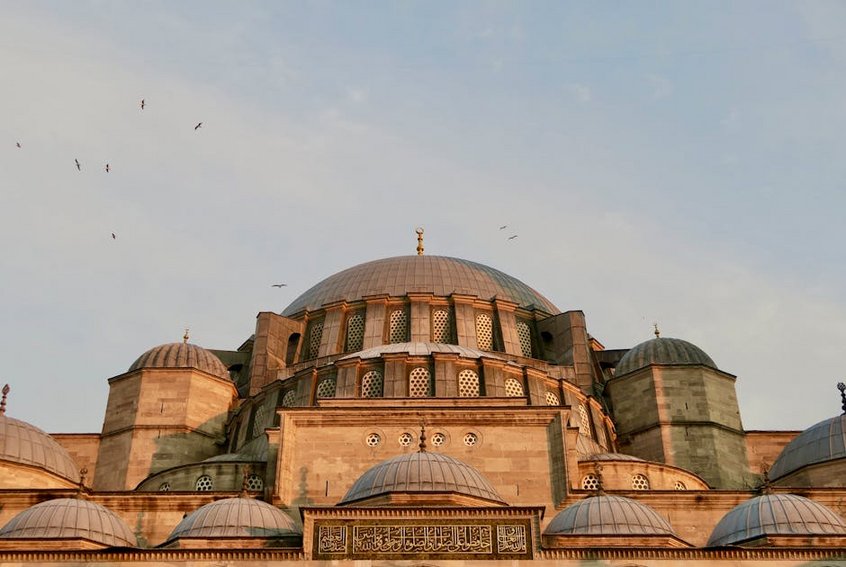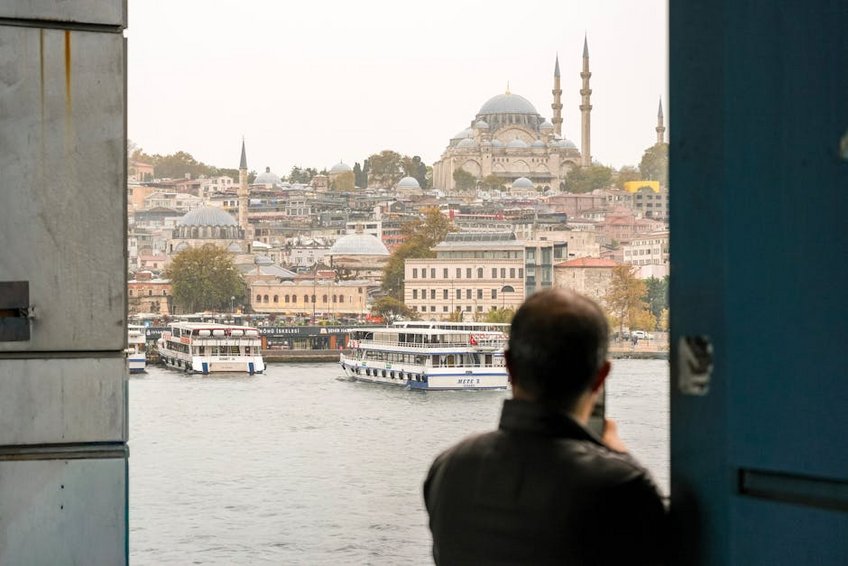Albania Gjirokastër Ottoman Architecture: Exploring a Historical Treasure
Stepping into Albania Gjirokastër Ottoman architecture feels like entering a living museum where history whispers from every stone. This UNESCO World Heritage site, often called the “City of Stone,” showcases perfectly preserved Ottoman-era houses with distinctive slate roofs, cobblestone streets, and grand mansions that tell stories of centuries past. You’ll find yourself marveling at the unique blend of Albanian and Ottoman influences, from the intricate wood carvings to the strategic hilltop positioning that offered defensive advantages. As you wander through the old bazaar, you can almost hear the echoes of merchants and craftsmen who once thrived here. The architecture isn’t just beautiful; it’s functional, designed to withstand time and elements while providing cool interiors during hot summers. For history buffs and culture enthusiasts, Albania Gjirokastër Ottoman architecture offers an immersive journey into a world where Eastern and Western traditions merge seamlessly. You’ll discover how local materials and craftsmanship created structures that have endured for hundreds of years, making it a must-visit destination for anyone interested in architectural heritage and Balkan history.
Albania Gjirokastër Ottoman Architecture – Essential Information
Understanding the foundations of Albania Gjirokastër Ottoman architecture helps you appreciate its significance before you even set foot in the city. Gjirokastër, located in southern Albania, boasts one of the best-preserved Ottoman towns in the Balkans, with buildings dating mainly from the 17th to 19th centuries. The city’s unique urban planning features narrow, winding streets that follow the natural contours of the hill, with houses built closely together using local stone. This architectural style emphasizes symmetry, with central halls called “hayats” that serve as multi-functional spaces for family life. You’ll notice characteristic elements like overhanging upper floors, carved wooden ceilings, and whitewashed walls that contrast beautifully with the grey stone. The Ottoman influence extends beyond homes to include mosques, bridges, and public baths, many of which have been restored to their original glory. Visiting here gives you a tangible connection to the Ottoman Empire’s expansion into Europe and its lasting cultural impact.
What is Gjirokastër? – An Overview
- Gjirokastër is a historic city in southern Albania, known as the “Stone City” due to its predominant use of slate and limestone in construction, and it serves as the capital of Gjirokastër County with a population of around 25,000 people.
- The city is a UNESCO World Heritage Site, recognized since 2005 for its exceptional preservation of Ottoman-era architecture and urban layout, which includes over 500 heritage buildings and a castle dating back to the 12th century.
- Key historical figures associated with Gjirokastër include former Albanian dictator Enver Hoxha, who was born here, and the city has played significant roles in various periods from Illyrian times through Ottoman rule to modern Albanian history.
- Budget travelers can expect daily costs of $30-$50 USD per person, covering hostel accommodations, self-catered meals, and free or low-cost attractions like walking tours and museum visits with student discounts.
- Mid-range options typically cost $70-$120 USD per day, including comfortable guesthouses in restored Ottoman homes, meals at local restaurants, and guided tours of key architectural sites like the Zekate House.
- Luxury experiences range from $150-$250 USD daily, featuring stays in boutique hotels with Ottoman decor, fine dining, private guides, and day trips to nearby UNESCO sites like Berat.
- Official Albania Tourism Authority
- UNESCO World Heritage Centre – Gjirokastër
The Ottoman Legacy in Gjirokastër
The Ottoman legacy in Gjirokastër is vividly present in every corner, with architectural elements that reflect the empire’s administrative and cultural dominance from the 15th to early 20th century. You’ll see how Ottoman builders adapted to the local terrain, creating multi-story houses with stone ground floors for storage and defense, and upper levels with large windows and balconies for living spaces. These homes often feature “cardak” – covered verandas that provide shade and ventilation – and interior courtyards that served as private family areas. The use of local materials not only made construction practical but also gave the city its distinctive grey aesthetic that changes color with the sunlight. Mosques like the Bazaar Mosque and Memi Bey Mosque showcase classic Ottoman design with domes and minarets, while the old bazaar area follows traditional Ottoman commercial patterns. This legacy isn’t just architectural; it’s embedded in local customs, cuisine, and even the Albanian language, with many Turkish loanwords still in use today.

Albania Gjirokastër Ottoman Architecture – Planning Your Trip
Planning your visit to experience Albania Gjirokastër Ottoman architecture requires careful consideration of seasons, budget, and preparation to make the most of your journey. The city’s hilltop location means weather can vary significantly, with hot summers and chilly winters, so packing layers is essential. You’ll want to allocate at least two to three days to fully explore the architectural wonders, from the Gjirokastër Castle to the numerous Ottoman houses converted into museums. Budget-wise, Albania remains one of Europe’s more affordable destinations, but costs can add up if you opt for guided tours or luxury accommodations. Booking in advance is recommended during peak seasons to secure the best rates and avoid crowds. Don’t forget to check visa requirements; for US and EU passport holders, Albania typically allows visa-free stays of up to 90 days, but always verify current regulations before traveling. With proper planning, you can immerse yourself in this architectural treasure without unnecessary stress.
Best Time to Visit Gjirokastër
The best time to visit Gjirokastër for optimal weather and fewer crowds is during the spring months of April to June or the autumn months of September to October. During these periods, temperatures range from 15°C to 25°C (59°F to 77°F), making it pleasant for walking the steep streets and exploring outdoor sites. Summer (July-August) can be hot, with temperatures often exceeding 30°C (86°F), but it’s also when cultural festivals like the National Folklore Festival occur, adding vibrant local experiences. Winter brings cooler temperatures around 5°C to 10°C (41°F to 50°F) and occasional rain, which might limit outdoor activities but offers a more atmospheric, misty view of the stone architecture. Regardless of season, always carry comfortable walking shoes as the cobblestone streets can be challenging in wet weather.
Budget Planning and Costs
Essential Preparation Checklist
Preparing for your trip to Gjirokastër involves several key steps to ensure a smooth experience. First, check your passport validity – it should have at least six months remaining from your planned departure date. Next, arrange travel insurance that covers medical emergencies and trip cancellations, as healthcare facilities in rural Albania may be limited. Pack comfortable walking shoes with good grip for the uneven stone streets, along with lightweight clothing for summer and layers for cooler months. Learn a few basic Albanian phrases like “faleminderit” (thank you) to enhance interactions with locals. Currency-wise, the Albanian Lek is used, but Euros are widely accepted; carrying some cash is advisable as not all places accept credit cards. Finally, download offline maps and translation apps since internet connectivity can be spotty in the old town areas.
Albania Gjirokastër Ottoman Architecture – Top Attractions and Activities
Exploring the top attractions of Albania Gjirokastër Ottoman architecture reveals a wealth of historical and cultural gems that captivate visitors from start to finish. Your journey should begin at the Gjirokastër Castle, a massive fortress that dominates the skyline and houses military museums and antique aircraft. From there, descend into the old town where you can visit iconic Ottoman houses like the Zekate House and Skenduli House, both showcasing exquisite woodwork and traditional layouts. Don’t miss the Ethnographic Museum, set in the former home of Enver Hoxha, which offers insights into daily life during the Ottoman period. For a deeper understanding, join a guided walking tour that explains the architectural nuances and historical contexts of each building. Evening strolls through the bazaar area provide magical moments as lights illuminate the stone facades, creating a timeless atmosphere that transports you back centuries.
Must-See Highlights
The must-see highlights of Gjirokastër’s Ottoman architecture include several key sites that define the city’s character. Start with the Zekate House, a three-story tower house famous for its twin towers, intricate carvings, and panoramic views from the upper floors. Next, visit the Skenduli House, which features a traditional “oda” (reception room) and original furnishings that illustrate Ottoman domestic life. The Gjirokastër Castle is unmissable, not just for its architecture but for the views it offers over the entire city and Drino Valley. Within the castle grounds, you’ll find the National Museum of Armaments and the Clock Tower, both adding historical depth. The Bazaar Mosque, though smaller, represents religious architecture from the Ottoman era, while the Old Bazaar itself is a living example of commercial urban design with its cobbled streets and artisan shops.
Hidden Gems and Local Favorites
Beyond the main attractions, Gjirokastër hides several lesser-known spots that offer authentic experiences of Ottoman architecture. Seek out the Kadiu Tower, a restored Ottoman tower house that now operates as a guesthouse, allowing you to stay overnight in a historic setting. The Mosque of Pazar, though partially reconstructed, provides a quiet place for reflection away from crowds. For a unique perspective, visit the Gjirokastër Obelisk on the outskirts, which commemorates independence struggles and offers sweeping views of the city’s architectural layout. Locals often recommend the “Tekke of the Bektashi,” a Sufi lodge that blends Islamic and local spiritual elements in its design. Don’t overlook the smaller side streets where you’ll find abandoned Ottoman houses slowly being reclaimed by nature – these hauntingly beautiful structures tell silent stories of the past and are perfect for photography enthusiasts.
Albania Gjirokastër Ottoman Architecture – Practical Travel Information
Navigating the practical aspects of visiting Albania Gjirokastër Ottoman architecture ensures a comfortable and enriching trip. Transportation options include flying into Tirana International Airport, then taking a bus or rental car for the 3-4 hour drive south to Gjirokastër; the scenic route passes through picturesque landscapes but involves winding mountain roads. Within the city, walking is the best way to explore the old town, as vehicles are restricted in many areas, but taxis are available for longer distances. Accommodation ranges from budget hostels to charming guesthouses in restored Ottoman homes, with many offering authentic experiences like homemade breakfasts and cultural workshops. English is spoken in tourist areas, but learning a few Albanian phrases will enhance your interactions. Safety is generally good, but be cautious on steep, uneven paths and keep valuables secure in crowded spots.
| Category | Options/Features | Price Range (USD) |
|---|---|---|
| Budget Accommodation | Hostels and basic guesthouses with shared facilities, often in traditional buildings | $15-$30 per night |
| Mid-Range Stays | Boutique hotels in Ottoman houses with private bathrooms and breakfast included | $40-$80 per night |
| Luxury Options | Upscale hotels with Ottoman decor, spa services, and guided tours | $100-$150 per night |


